
Lionhead Studios Limited was a British video game developer founded in July 1997 by Peter Molyneux, Mark Webley, Tim Rance, and Steve Jackson. The company is best known for the Black & White and Fable series. Lionhead started as a breakaway from developer Bullfrog Productions, which was also founded by Molyneux. Lionhead's first game was Black & White, a god game with elements of artificial life and strategy games. Black & White was published by Electronic Arts in 2001. Lionhead Studios is named after Webley's hamster, which died not long after the naming of the studio, as a result of which the studio was very briefly renamed to Redeye Studios.

Populous is a video game developed by Bullfrog Productions and published by Electronic Arts, released originally for the Amiga in 1989, and is regarded by many as the first god game. With over four million copies sold, Populous is one of the best-selling PC games of all time.
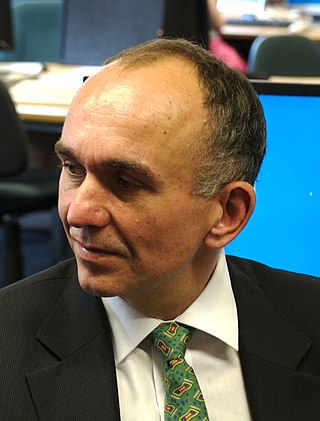
Peter Douglas Molyneux is an English video game designer and programmer. He created the god games Populous, Dungeon Keeper, and Black & White, as well as Theme Park, the Fable series, Curiosity: What's Inside the Cube?, and Godus. In 2012 he founded and currently runs 22cans, a video game development studio.
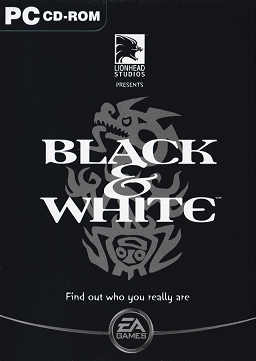
Black & White is a god video game developed by Lionhead Studios and published by Electronic Arts for Microsoft Windows in 2001 and by Feral Interactive in 2002 for Mac OS. Black & White combines elements of artificial life and strategy. The player acts as a god whose goal is to defeat Nemesis, another god who wants to take over the world. A primary theme is the concept of good and evil, with the atmosphere being affected by the player's moral choices. The core gameplay mechanic of Black & White is the interaction between the player and an avatar creature, who carries out the player's instructions and whose personality and behaviour change in reaction to how they are treated. Multiplayer is supported over a local network or online.
Syndicate is a series of science fiction video games created by Bullfrog Productions and published by Electronic Arts. There are two main titles: Syndicate (1993) and Syndicate Wars (1996), both of which are isometric real-time tactics games. An additional first-person shooter Syndicate title was released in 2012, and a spiritual successor to the series, entitled Satellite Reign, was released in 2015.

Bullfrog Productions Limited was a British video game developer based in Guildford, England. Founded in 1987 by Peter Molyneux and Les Edgar, the company gained recognition in 1989 for their third release, Populous, and is also well known for titles such as Theme Park, Theme Hospital, Magic Carpet, Syndicate and Dungeon Keeper. Bullfrog's name was derived from an ornament in the offices of Edgar's and Molyneux's other enterprise, Taurus Impact Systems, Bullfrog's precursor where Molyneux and Edgar were developing business software. Bullfrog Productions was founded as a separate entity after Commodore mistook Taurus for a similarly named company.
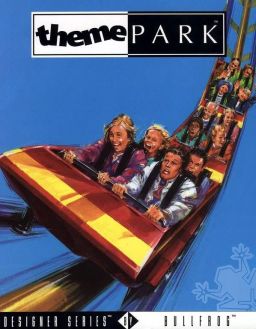
Theme Park is a construction and management simulation video game developed by Bullfrog Productions and published by Electronic Arts in 1994. The player designs and operates an amusement park, with the goal of making money and creating theme parks worldwide. The game is the first instalment in Bullfrog's Theme series and their Designer Series.
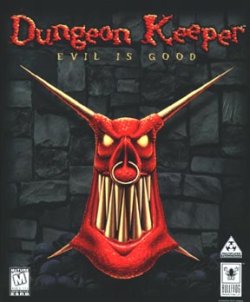
Dungeon Keeper is a strategy video game developed by Bullfrog Productions and released by Electronic Arts in June 1997 for MS-DOS and Windows 95. In Dungeon Keeper, the player builds and manages a dungeon, protecting it from invading 'hero' characters intent on stealing accumulated treasures, killing monsters and ultimately the player's demise. The ultimate goal is to conquer the world by destroying the heroic forces and rival dungeon keepers in each realm. A character known as the Avatar appears as the final hero. Dungeon Keeper uses Creative Technology's SoundFont technology to enhance its atmosphere. Multiplayer with up to four players is supported using a modem, or over a local network.

Theme Hospital is a business simulation game developed by Bullfrog Productions and published by Electronic Arts in 1997 for MS-DOS and Microsoft Windows compatible PCs in which players design and operate a privately owned hospital with the goal of curing patients of fictitious comical ailments. The game is the thematic successor to Theme Park, also produced by Bullfrog, and the second instalment in their Theme series, and part of their Designer Series. The game is noted for its humour, and contains numerous references to pop culture.

Fusion is a scrolling multidirectional shooter developed by Bullfrog Productions and published by Electronic Arts in 1988 for the Atari ST and Amiga.

Theme Aquarium is a simulation video game published by Electronic Arts Square, in which the player creates and controls a sea life aquarium. It was originally released on 17 December 1998 for PlayStation only in Japan. The game was later ported to Microsoft Windows under the name Aquarium and was released in Europe on 25 December 2000.
Gary Carr is an English video game developer. His career began at Palace Software, where he worked on titles such as Barbarian: The Ultimate Warrior and Barbarian II: The Dungeon of Drax. In 1989, he joined Bullfrog Productions and worked as lead artist on Powermonger and Populous II. He also worked on Theme Park, but, after a disagreement with Peter Molyneux, he left the company to work for The Bitmap Brothers, where he worked on The Chaos Engine 2. He returned to Bullfrog in 1995 hoping to work on Dungeon Keeper, but worked on Theme Hospital instead. He left Bullfrog again in 1998 to join Mucky Foot Productions.
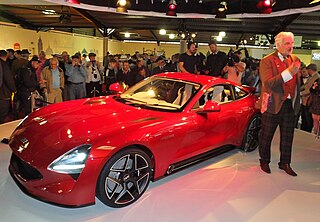
Les Edgar is an entrepreneur, known for being the co-founder and joint managing director of Bullfrog Productions, which he set up with Peter Molyneux. After Bullfrog's acquisition by Electronic Arts in 1995, Edgar became a vice president there. Edgar left Bullfrog in 1999, and eventually left the video gaming industry for the automotive industry, where he reintroduced Aston Martin to racing, and became chairman of TVR, which has, under his leadership, set up partnerships with Gordon Murray and Cosworth. Edgar has stated that he intends to return TVR to Le Mans 24 Hours.
Mark Webley is a British video game developer, known for working with developers such as Peter Molyneux and Gary Carr for Bullfrog Productions and later Lionhead Studios on projects including Theme Hospital and Black & White. In 2012, he took over as head of Lionhead after Molyneux left, and in 2016, he founded a studio called Two Point Studios with Carr, which has signed a publishing deal with Sega.

Two Point Studios is a British video game development company founded on 26 July 2016 by Ben Hymers, Mark Webley, and Gary Carr. Carr and Webley had previously worked on titles including Theme Hospital, Black & White, and the Fable series for Bullfrog Productions and later Lionhead Studios, and Two Point Studios has other developers from those companies and Mucky Foot Productions. In May 2019, the company was acquired by Sega and became part of Sega Europe.
Glenn Corpes is an independent video game developer. He is best known for his work at Bullfrog Productions on titles including Populous, Magic Carpet, and Dungeon Keeper. He left Bullfrog in 1999 to form Lost Toys, which developed two games including Battle Engine Aquila. He has since focused on mobile game development and has created Ground Effect for iOS and Topia World Builder for iOS and Android. His latest projects are Fat Owl With A JetPack, and powARdup. His work has influenced games such as Minecraft.

Lost Toys Ltd. was a British video game developer founded in March 1999 by Glenn Corpes, Jeremy Longley, and Darran Thomas, all of whom had previously worked for Bullfrog Productions. Les Edgar helped by providing financial support. Lost Toys was the third Bullfrog break-off group, after Mucky Foot Productions and Lionhead Studios, and was founded due to disillusionment after Electronic Arts purchased Bullfrog.
The Indestructibles is an unreleased arcade strategy video game developed by Bullfrog Productions. The game would have had players control a superhero or a team of superheroes to do battle with super villains.














